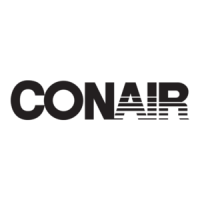How It Works
2-4 l Descript ion
The Process (Drying) Cycle (W1600 - 5000)
Process air from the hopper is pulled into the dryer, through the process filter and
then into the process blower inlet. Air exits the process blower and then enters the
intercooler, then passes through the desiccant wheel, where moisture is removed.
The air exits the dryer and passes through the precooler (if installed), then into the
process heat source (HTC or CGT Gas Unit). After the air exits the process heat
source it then goes into the hopper inlet through internal piping, then to the spread-
er cone, which evenly distributes the air through the material.
The Cooling Cycle (All models except W2400 and 5000)
Regenerated desiccant must be cooled before it rotates back into the process cycle.
The process blower pushes the process air through the desiccant wheel. A small
amount of the process air is diverted through a small section of the desiccant wheel
to cool the air. The cooling air then returns back to the process air stream at the
start of the process cycle.
The Regeneration Cycle
The regeneration blower pulls air through the regeneration filter into the dryer’s
regeneration heater. The air is heated to 350°F {177°C} before it is pushed into the
“wet” section of the desiccant wheel. The hot air purges moisture from the
desiccant. The moist air is blown out the moisture exhaust at the top of the dryer.
The Process (Drying) Cycle (W600 - 1000)
Process air from the hopper is pulled into the dryer, through the process filter and
then into the process blower inlet. Air exits the process blower and then enters the
aftercooler, then passes through the desiccant wheel, where moisture is removed.
The air exits the dryer and passes through the precooler (if installed), then into the
process heat source (HTC or CGT Gas Unit). After the air exits the process heat
source it then goes into the hopper inlet, then to the spreader cone, which evenly
distributes the air through the material.

